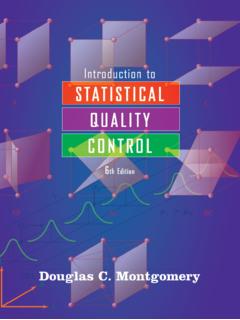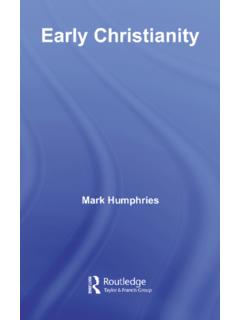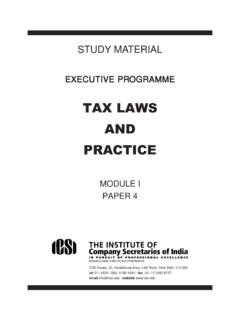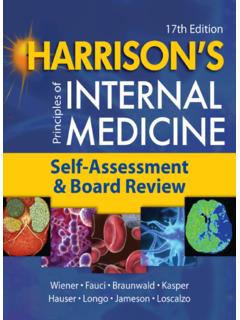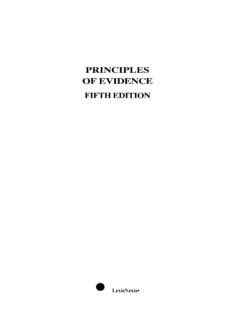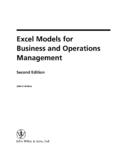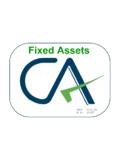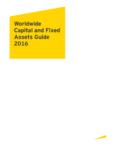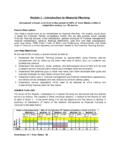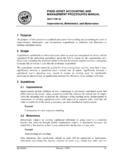Transcription of 11 12 MBA Financial Reporting Pack Part 2 Notes - …
1 MBA Financial Reporting Financial Reporting Course Notes 1. introduction to Financial Accounting Prof Niamh Brennan, University College Dublin 1 Section 1: introduction to Financial Accounting Bookkeeping and accounting Bookkeeping Accounting Financial accounting vs. management accounting Types of business organisations Sole trader Partnership A company Charities, Societies, State Bodies Final accounts The balance sheet Assets Liabilities Capital The balance sheet equation Example balance sheet The profit and loss account Revenues Expenses Example profit and loss account The asset stock Double entry bookkeeping Debits (Dr.) and credits (Cr.) These Notes provide a basic introduction to Financial accounting, for students with no prior knowledge of the subject.
2 The Notes deal with six topics: 1. Bookkeeping and accounting; 2. Types of business organisations; 3. Final accounts; 4. The balance sheet; 5. The profit and loss account; 6. Double entry bookkeeping. Bookkeeping and accounting Bookkeeping This involves the methodical recording of the day-to-day Financial transactions of a business. These transactions are entered in books of prime entry and the nominal ledger. Books (sometimes called journals) of prime entry are the first point of entry of transactions in the accounting system. Although transactions may be documented ( invoices, cash register till rolls, petty cash vouchers, etc), until they are recorded in a book of prime entry, they are not part of the double entry accounting system. There are usually seven (or more) books of prime entry in most businesses, as follows: 1.
3 introduction to Financial Accounting Prof Niamh Brennan, University College Dublin 21. Cash receipts book/journal; 2. Cheque payments book/journal; 3. Petty cash book/journal; 4. Sales book/journal; 5. Purchases book/journal; 6. Wages book/journal; 7. General journal. The heart of the accounting system is the nominal ledger, which is a collective term to refer to all the accounts of the business. Double entry bookkeeping is recorded in these accounts (see Section further on). A number of individuals in a business usually share the bookkeeping responsibilities. Thus, most businesses have a sales clerk, a debtors ledger clerk, a purchases clerk, a creditors ledger clerk, a wages clerk, a nominal/general ledger clerk etc. This reflects the importance from a control point of view of segregation of duties/separation of responsibilities in accounting systems.
4 Accounting This involves a range of functions including the design of the accounting system, the preparation of monthly/quarterly management accounts, the preparation of interim/year-end Financial accounts, the preparation of budgets, submission of information to State agencies such as the Revenue, the Industrial Development Authority (IDA) etc., preparation of loan applications for the banks etc. Financial accounting vs. management accounting The Financial accountant is concerned with Reporting to outsiders the shareholders/owners of the business, the Revenue and other government agencies, the banks etc. The management accountant reports accounting information internally to the management and employees of the business.
5 In larger organisations the Financial and management accountant are different individuals. The basic information used by the Financial and management accountant comes from the bookkeeping system. Types of business organisations Sole trader A single owner runs the business doctor 1. Partnership A number of individuals own and run the business together an accountancy practice A company A company is a business that is registered with the Registrar of Companies (Parnell House, Parnell Square) under the Companies Acts 1963 to 2003. This procedure is called incorporation. There are many different types of registered company: Unlimited France Germany Limited Public ( listed on a recognised stock exchange) (denoted by the letters plc [public limited company]) SA GmBH Private ( non-listed, closely held corporations) (denoted by the letters Ltd [limited]) SARL/EURL 1.
6 introduction to Financial Accounting Prof Niamh Brennan, University College Dublin 3 Limited by guarantee Almost all registered companies are limited liability companies the liability of the owners or shareholders of the company is limited to the amount of capital they put into the company. Thus, when a company is put into liquidation or is wound up the creditors of the company may not get fully paid. Because of limited liability, the liquidator of the company is not able to get more money from the shareholders to fully pay off the creditors. The term '& company' is used to refer to the rest of the company of individuals in a partnership. This term has nothing to do with registered companies. A registered company is usually indicated by the letters plc/ltd.
7 Charities, Societies, State Bodies These are businesses, usually of a specialist nature, which are legally incorporated under legislation specifically drawn up for the business/type of business. Final accounts All registered companies must submit annual returns to the Registrar of companies on an annual basis. The annual return includes the final accounts. Three primary Financial statements almost always comprise the final accounts: a balance sheet of the company at the year-end date; a profit and loss (income statement) for the previous year's trading; and a cash flow statement for the previous year. The Balance Sheet The balance sheet is a snapshot picture of a company's Financial position at a certain date. The balance sheet is always headed up with the name of the company to which it relates, the title of the account ( the balance sheet) and the balance sheet date.
8 The currency used is also shown at the top of the balance sheet and comparative amounts are shown for the previous year. The layout is almost always vertical ( the assets are shown first with the liabilities and capital underneath) although the more old fashioned horizontal layout ( assets shown on the right/left hand side of the page with the liabilities/capital opposite) is occasionally seen. The balance sheet, as its title indicates, must balance. Thus, two amounts/totals will appear on the balance sheet which will agree. These totals are distinguished by being double underlined. The balance sheet is a statement of the company's Financial position. This is represented by a list of the company's assets, liabilities and capital. Assets An asset is something owned by a business which will provide future benefit to the business.
9 If the future benefit will be obtained within the next year the asset is a 'current asset ' stock (which will usually be sold to generate profit in the next year), debtors (who will usually pay their debts within one year) and cash at bank/on hand (which can be used within the next year.) If the future benefit will be obtained after more than one year the asset is a ' fixed asset ' (non-current asset ) Land and buildings, plant and machinery, fixtures and fittings, motor vehicles all of which have a useful life of more than one year. Investments in shares of companies are also usually fixed assets since the investments are usually held for more than one year. 1. introduction to Financial Accounting Prof Niamh Brennan, University College Dublin 4 There are three categories of fixed assets: Intangible assets (non-physical assets goodwill, brand values, legal rights such as patents, trademarks etc), tangible assets (physical assets) and Financial assets ( investments in other companies in the form of shares, loan stock etc).
10 An asset such as a motor vehicle could be classified as either a current asset or a fixed asset depending on how the asset is used. If the motor vehicle is purchased for use in the business over the useful life of the vehicle then it will be recorded as a fixed asset . If, on the other hand, it is purchased for resale (as in a motor dealer's business) the vehicle will be treated as a current asset called stock. Liabilities Liabilities are amounts owing/obligations to 'outsiders' (as opposed to the owners) of a business. The person/business to whom the money is owed is often referred to as a creditor. Moneys owing to creditors within one year are 'current liabilities' trade creditors for goods/services supplied to the business, taxation due, bank overdraft).
